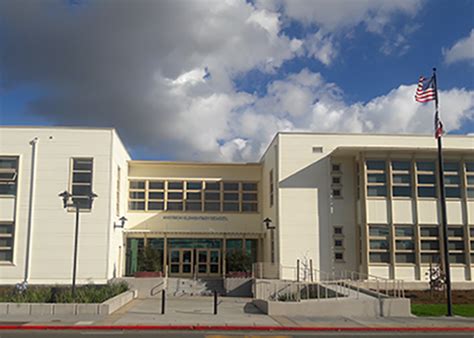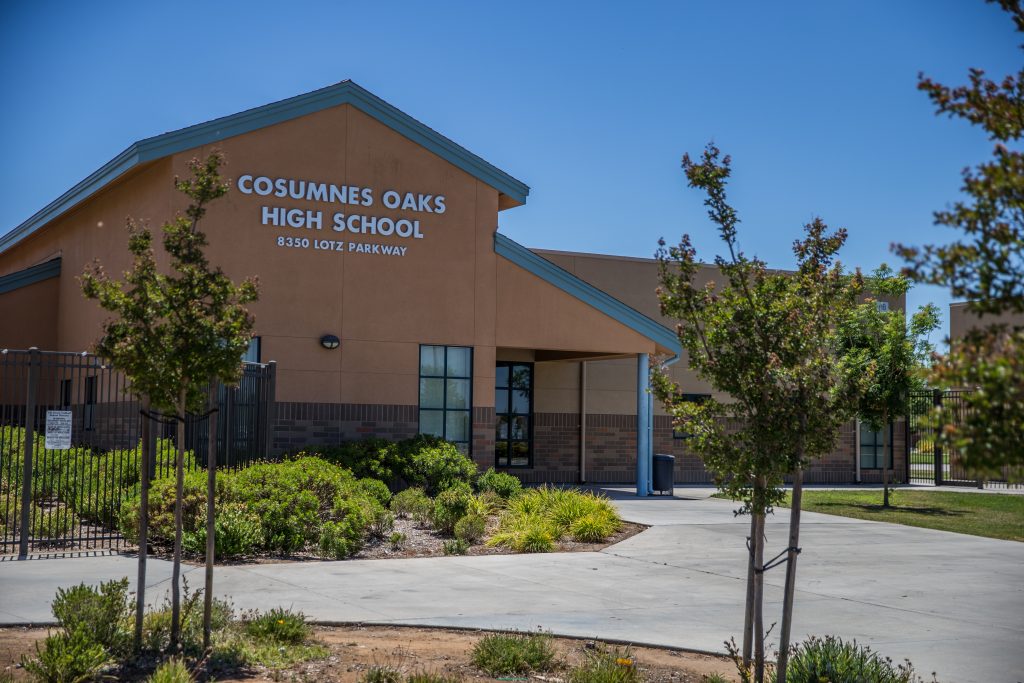
West Contra Costa Unified School District
West Contra Costa School District Putting a Half-Billion Bond Before Voters in March
In case you’re wondering, school bond measures almost always pass
By Edward Ring, January 9, 2020 2:15 am
Wouldn’t saving $37 million mean the deficit, at least for this year, would be reduced from $39.9 million to $2.9M?
One of the most financially mismanaged school districts in California has found a solution to their financial challenges – borrow more money, and let the voters pay more in property taxes.
Scheduled to appear on the March 2020 local ballot for voters living within the West Contra Costa Unified School District, Measure R, a “classroom modernization and safety update measure,” will seek approval to “issue $575 million of bonds, at legal rates, averaging $34.48 million annually while bonds are outstanding, at 6¢ per $100 assessed value, with strict citizens’ oversight, annual audits and all money for local schools.”
In case you’re wondering, school bond measures almost always pass. In 2018, for example, data compiled by CalTax indicates that over 90 percent of school bonds were approved by voters. A California Policy Center analysis conducted at the time estimated the total of these local school bond measures set California voters back another $15.5 billion. This sum is typical per election cycle, and doesn’t include statewide school bond measures, such as the $13 billion state bond for school construction planned for the 2020 California ballot.
That state bond proposal for $13 billion will “supplement” the billions, or possibly tens of billions, offered via hundreds of local school construction bonds proposals, set to appear on local ballots in March 2020, with more to come in November.
Not An Exemplary Candidate for More Construction Borrowing
West Contra Costa Unified School District (WCCUSD) faces declining enrollment, but to-date has been unwilling to close schools. Instead, last month the district denied the renewal application of John Henry Charter High School, despite a huge turnout at the hearing where impassioned parents, students, and former students begged the district to keep the school open. While acknowledging the “academic increases” achieved by the charter school, the board, as one of the members put it, would not support the charter school staying open due to the “financial impact charter schools have on the district” as it faces a 2020-21 projected deficit of roughly $48 million.
If every Californian over the age of 60 collected a pension that big, it would cost $563 billion per year.
An excellent recent report on the financial travails of WCCUSD was published on December 10th in the local Richmond Standard. The report notes a 2019-20 deficit of $39.9 million, then quotes associate superintendent Tony Wold, as saying if they cut administrator positions, mostly assistant principals, they would save $37 million, which “won’t be nearly enough to solve the deficit.” But wouldn’t saving $37 million mean the deficit, at least for this year, would be reduced from $39.9 million to $2.9M? Wold also identified “non-salary expenditures” that could be cut, which suggests there might be a pathway out of the red.
Also mentioned as presenting a dire challenge to the solvency of WCCUSD are the “skyrocketing employee retirement costs,” which would include pensions as well as supplemental retirement health insurance benefits. You can say that again. In the Richmond Standard article, a table entitled “District Expenses Trends” shows projected “Employee Benefits” costs rising from $70.2 million in 2015-16 to $102.3 million in 2019-20. Similarly, total salaries (“Certificated” and “Classified”) rose from $168.8 million in 2015-16 to $220.2 million in 2019-20.
In just four years, salary and benefit costs for WCCUSD have risen by $83 million, an increase of 35 percent. During that same period, the Consumer Price Index has jumped a mere 7.6 percent. Perhaps the WCCUSD board of supervisors should ask themselves why they’ve approved salary and benefit increases over the past four years at over five times the rate of inflation.
Are WCCUSD Teachers Overpaid or Underpaid?
Viewing data from Transparent California, you decide. Administrators are certainly not underpaid, with the first 100 records – nearly all of them administrators, all reporting individuals who are earning total compensation of $150,000 per year or more. As for pensions, the average reported by Transparent California for WCCUSD retirees with 30 years of service is over $67,000 per year, not including supplemental insurance benefits.
You don’t think that’s a lot? If every Californian over the age of 60 collected a pension that big, it would cost $563 billion per year. And the maximum Social Security benefit, which requires a lifetime of high income and a retirement deferred till age 70, is only $45,480 per year. The top pensioner from WCCUSD is earning a pension of over $170,000 per year; 45 WCCUSD retirees earned a pension in 2018 that was over $100,000.
But few would suggest that good teachers, anywhere, are overpaid. So how well are WCCUSD teachers doing their jobs?
According to Ed Data, in 2017-18, the most recent year reporting, 65.6 percent of WCCUSD students did not meet basic state standards in English literacy, and 76.7 percent of WCCUSD students did not meet basic state standards in Mathematics numeracy.
It is in the face of this dismal performance that Contra Costa’s board of supervisors, instead of cutting non classroom personnel, or having an honest conversation with the employees about sharing the cost of benefits, are closing a charter school that had strong community support from the parents, students and alumni. But apparently that’s not the right community.
The War On Charter Schools
According to the group In the Public Interest (ITPI), working “in partnership with California’s West Contra Costa Unified School District (WCCUSD) staff, directly measured the financial impact of charter schools on students who attend the district’s traditional public schools.” This group concluded that “Charter schools cost WCCUSD $27.9 million during the 2016-17 school year.”
ITPI further recommended that “each California school district should produce an annual report assessing the economic impacts of charter school expansion on district students.” There are at least two huge problems with this recommendation. First, most school districts in California have overflowing classrooms, and since district revenue is based on student attendance, more students cramming into traditional public schools would mean more hiring and more construction, which does not solve the financial problem. And if classrooms are half empty, close schools and consolidate.
The financial problem facing California’s schools can only be solved by eliminating non classroom positions, requiring employees to pay more towards their benefits via payroll withholding, and empowering more charter schools, not fewer, since charter schools seem to be able to operate without budget deficits while turning in better overall educational outcomes.
Which brings us to the next flaw in ITPI’s recommendation. Along with better understanding of the allegedly negative financial impact that charter schools have on traditional public school districts, equal priority ought to be given to seeing how charter schools perform academically vs traditional public schools.
WCCUSD’s Incredibly Wasteful Construction Legacy
A lot could be said about how recent school construction bond proceeds were misused by WCCUSD. But again much of the problems at WCCUSD are mirrored throughout the state. As reported in the East Bay Times, after disagreements over how some of WCCUSD’s previous construction bond funds were applied, in 2016 the district board ousted Bill Fay, associate superintendent of operations. Fay was criticized for not staying within budgets, but in response he said “costs often exceeded original estimates because the scope would increase due to the district’s desire to give communities everything they want.”
Board President Charles Ramsey, on the other hand, said “This is driven by standards. It’s not driven by scope.”
Standards is an interesting concept that financial reformers – whether their concern is schools, market housing, affordable housing, or homeless shelters – need to examine closely. Standards, from CEQA and ADA compliance to renewables mandates, myriad set asides, and literally countless other regulations, are the reason everything costs more in California.
An anecdotal example of this might be WCCUSD’s $21 million athletic stadium planned for El Cerrito High School. First of all, didn’t they already have a stadium? What was wrong with that stadium? And what happened to the stadiums that alumni born before, say 1970, can clearly remember – the ones that consisted of bleachers constructed out of wood planks and metal scaffolding, positioned on either side of a running track of crushed granite, that surrounded a field of natural grass? Would that cost $27 million?
Of course not. And as for going back to these standards? Why not? Try to find a coach that prefers artificial turf to real grass. They’re few and far between. Try to find an honest study that proves that artificial turf creates a heat island requiring sprinklers, and uses a lot of toxic materials, that utterly negates its alleged environmental, water saving benefits. You won’t, because synthetic turf contractors pay for the studies.
The financial problem facing California’s schools can only be solved by eliminating non classroom positions.
Still, WCCUSD cannot explain all their prodigious spending away based on unavoidable “standards.” In 2015 a grand jury was convened in Contra Costa County to investigate allegations of inadequate oversight on WCCUSD’s construction bonds. The grand jury’s findings ought to make any taxpayer cringe, along with the parents and students in WCCUSD. Three of the most egregious findings were:
- Property owners in WCCUSD pay 291 percent of the state average in school bond assessments on their property tax bills.
- The cost per square foot of school construction is three times the state average.
- Twenty-nine percent of the $1.1 billion (nearly $300 million) spent through June 2015 went for non-construction costs – program management and architect’s fees.
Imagine that, paying three times the state average per square foot for school construction. To get an idea of just how much potentially wasted money that equates to, consider this: The average cost per square foot nationally for school construction is between $211 (elementary schools) and $243 (middle schools). But the grand jury report referenced the “state average,” and when it comes to construction costs, California is anything but typical.
For example, earlier this year construction was completed on a new high school in Pinole Valley, part of WCCUSD. The facility encompassed 267,000 square feet and cost approximately $250 million. This is nearly $1,000 per square foot. Sure, there were demolition costs and costs for temporary structures included in that $250 million, but total project costs always include extras. The real question is why are these costs anywhere close to $1,000 per square foot? Why can’t California’s policymakers and judiciary figure out how to restore California’s construction costs closer to national averages?
Even the Mainstream Newspapers Oppose WCCUSD’s New Bond
California’s taxpayers have already spent billions and billions on construction projects that are hobbled with mandates and “standards” that have become an engine of legalized corruption. The padded, broken budgets that result are going to break the finances of Californians without ever solving anything. From homeless shelters and supportive housing to affordable housing to public schools, construction costs in California are out of control. It has become a scandal that even the historically quiescent media can no longer ignore.
The title of an editorial published on January 8th by the San Jose Mercury says it all, “Reject nearly broke Contra Costa school district’s deceitful plan to borrow more money for construction.” Subtitle: “Fiscally reckless Measure R bonds would drive up West County taxes, building costs to staggering $70,000 per student.”
The San Jose Mercury dedicated a generous amount of space to their editorial. At over 1,100 words and filled with facts, it goes into considerable depth describing both WCCUSD’s “jaw dropping” waste of school construction money over the years and the appallingly mismanaged district finances. Perhaps the fourth estate is waking up. Perhaps their belated embrace of numeracy will channel their innate but highly selective skepticism down new avenues. We may hope.
Meanwhile, what the mainstream press can also do – along with the board of supervisors of West Contra Costa Unified School District, along with every other school board, continuum of care office, housing authority, and planning commission in the state – is confront the byzantine gaggle of regulations that has made construction cost far more in California than it does pretty much anywhere else in the world.
The education establishment, and their watchdogs, might also end their war on charter schools, first by no longer pretending the recent “compromise” was anything less than a defeat for education reform. They might reopen a Vergara type case, so teachers would have to earn tenure instead of having it granted after barely a year and a half of classroom observation, and so incompetent teachers could be fired, and so great teachers could be retained in a layoff. They might even stop thinking the notion of school vouchers, which would solve most of California’s educational challenges literally overnight, and save the next generation of K-12 students, is a political bridge too far.
We seem to be able to do anything, with no cost too great, whenever it’s “for the children,” except, of course, when it steps on the toes of the teachers union, the pension funds, or the underwriters.
- Ringside: Will the Delta Pumps Operate at Capacity this Winter? - December 18, 2025
- Ringside: Will Advocates for More Water Supply Projects Find Unity? - December 11, 2025
- Ringside: EVs and California’s Future Demand for Electricity - December 4, 2025





Appreciate Edward Ring. From someone who has spent way too much time following how my local school district operates I see he has hit the nail on the head once again.
It seems to me that has been written here about West Contra Costa School District can be generalized to apply to virtually every school district in California.
Clearly this fool did not read the staff findings for John Henry High School. JHHS does not serve any similar population to the district, this is in fact required by charter law: to achieve racial and ethnic balance. Also the organization was viewed as demonstrably unlikely to implement their program. Your opinions on this situation are misinformed. The organization you speak of has several notice of concerns and violations (the final step before revocation) by their authorizers. Check your facts before you post non-sense.
Awesome article.
Acknowledge Edward Ring. From somebody who has invested an excessive lot of energy following how my neighborhood school locale works I see he has gotten the job done perfectly by and by.